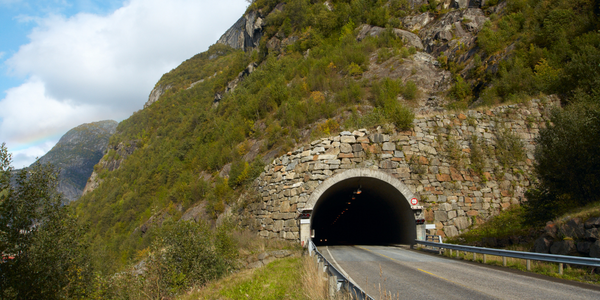技术
- 应用基础设施与中间件 - 数据库管理和存储
- 网络安全和隐私 - 数据库安全
适用行业
- 建筑物
- 建筑与基础设施
服务
- 测试与认证
关于客户
网络干扰开放观察站 (OONI) 是一个非营利性免费软件项目,旨在支持分散化的工作,记录全球互联网审查制度。 OONI 成立于十多年前,旨在提高互联网审查的透明度。他们为用户提供免费的软件工具来测试他们的互联网连接质量、检测审查和测量网络干扰。 OONI 收集其全球志愿者网络生成的数据,对其进行分析,将其作为开放数据发布,并进行研究,将研究结果与特定国家、地区以及正在进行的社会或政治事件联系起来。他们还与全球 43 个合作伙伴组织合作,传播调查结果、开展宣传并支持政策制定和法律行动。
挑战
网络干扰开放观察站 (OONI) 是一个非营利组织,提供免费软件工具来记录全球互联网审查制度。他们的工具允许用户测试他们的互联网连接质量、检测审查并测量网络干扰。然而,OONI 在处理这些测试生成的大量数据方面面临着重大挑战。他们最初使用平面文件、MongoDB 和 PostgreSQL 来存储测量实验的元数据。随着数据集增长到数亿行,出现了性能问题,需要从 OLTP 数据库转向 OLAP 数据库。 OONI 需要一种解决方案,能够简化其架构,同时处理复杂的数据可视化并支持对其 1B+ 行数据集进行搜索和聚合。
解决方案
OONI 采用 ClickHouse 作为其数据存储和分析引擎来处理大量数据。 ClickHouse 使 OONI 能够对通过其网络测量测试收集的大量数据执行复杂的查询。它还支持生成可视化效果,这有助于识别数据中的趋势和模式。 ClickHouse 简化了 OONI 的架构,使研究人员能够更轻松地访问数据。原始数据(压缩的 JSON 文件)存储在 S3 上,而元数据存储在单个大表中。该表包含用于分析和聚合的所有相关元数据,例如国家/地区、网络、时间戳、目标和分析结果。它具有 14 亿条记录和 32 列的大小,用于许多聚合查询,为 OONI 测量聚合工具包 (MAT) 及其内部数据分析工具提供支持。
运营影响
数量效益

Case Study missing?
Start adding your own!
Register with your work email and create a new case study profile for your business.
相关案例.

Case Study
Energy Saving & Power Monitoring System
Recently a university in Taiwan was experiencing dramatic power usage increases due to its growing number of campus buildings and students. Aiming to analyze their power consumption and increase their power efficiency across 52 buildings, the university wanted to build a power management system utilizing web-based hardware and software. With these goals in mind, they contacted Advantech to help them develop their system and provide them with the means to save energy in the years to come.

Case Study
IoT System for Tunnel Construction
The Zenitaka Corporation ('Zenitaka') has two major business areas: its architectural business focuses on structures such as government buildings, office buildings, and commercial facilities, while its civil engineering business is targeted at structures such as tunnels, bridges and dams. Within these areas, there presented two issues that have always persisted in regard to the construction of mountain tunnels. These issues are 'improving safety" and "reducing energy consumption". Mountain tunnels construction requires a massive amount of electricity. This is because there are many kinds of electrical equipment being used day and night, including construction machinery, construction lighting, and ventilating fan. Despite this, the amount of power consumption is generally not tightly managed. In many cases, the exact amount of power consumption is only ascertained when the bill from the power company becomes available. Sometimes, corporations install demand-monitoring equipment to help curb the maximum power demanded. However, even in these cases, the devices only allow the total volume of power consumption to be ascertained, or they may issue warnings to prevent the contracted volume of power from being exceeded. In order to tackle the issue of reducing power consumption, it was first necessary to obtain an accurate breakdown of how much power was being used in each particular area. In other words, we needed to be able to visualize the amount of power being consumed. Safety, was also not being managed very rigorously. Even now, tunnel construction sites often use a 'name label' system for managing entry into the work site. Specifically, red labels with white reverse sides that bear the workers' names on both sides are displayed at the tunnel work site entrance. The workers themselves then flip the name label to the appropriate side when entering or exiting from the work site to indicate whether or not they are working inside the tunnel at any given time. If a worker forgets to flip his or her name label when entering or exiting from the tunnel, management cannot be performed effectively. In order to tackle the challenges mentioned above, Zenitaka decided to build a system that could improve the safety of tunnel construction as well as reduce the amount of power consumed. In other words, this new system would facilitate a clear picture of which workers were working in each location at the mountain tunnel construction site, as well as which processes were being carried out at those respective locations at any given time. The system would maintain the safety of all workers while also carefully controlling the electrical equipment to reduce unnecessary power consumption. Having decided on the concept, our next concern was whether there existed any kind of robust hardware that would not break down at the construction work site, that could move freely in response to changes in the working environment, and that could accurately detect workers and vehicles using radio frequency identification (RFID). Given that this system would involve many components that were new to Zenitaka, we decided to enlist the cooperation of E.I.Sol Co., Ltd. ('E.I.Sol') as our joint development partner, as they had provided us with a highly practical proposal.

Case Study
Intelligent Building Automation System and Energy Saving Solution
One of the most difficult problems facing the world is conserving energy in buildings. However, it is not easy to have a cost-effective solution to reduce energy usage in a building. One solution for saving energy is to implement an intelligent building automation system (BAS) which can be controlled according to its schedule. In Indonesia a large university with a five floor building and 22 classrooms wanted to save the amount of energy being used.

Case Study
Powering Smart Home Automation solutions with IoT for Energy conservation
Many industry leaders that offer Smart Energy Management products & solutions face challenges including:How to build a scalable platform that can automatically scale-up to on-board ‘n’ number of Smart home devicesData security, solution availability, and reliability are the other critical factors to deal withHow to create a robust common IoT platform that handles any kind of smart devicesHow to enable data management capabilities that would help in intelligent decision-making

Case Study
Splunk Partnership Ties Together Big Data & IoT Services
Splunk was faced with the need to meet emerging customer demands for interfacing IoT projects to its suite of services. The company required an IoT partner that would be able to easily and quickly integrate with its Splunk Enterprise platform, rather than allocating development resources and time to building out an IoT interface and application platform.








